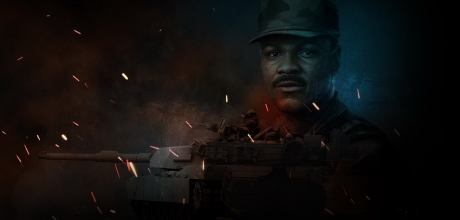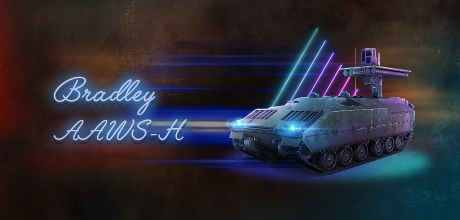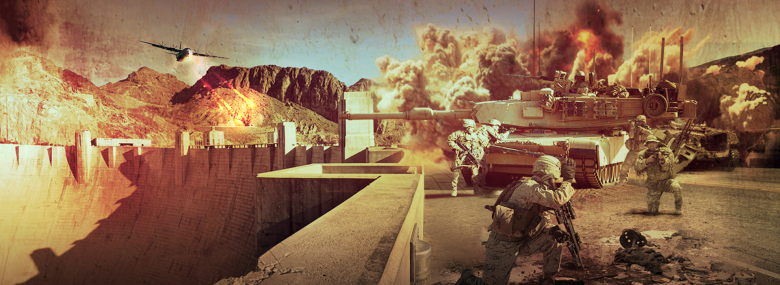
Commanders!
The CATTB is one of the last evolutions of the Abrams design from back when a radically different successor to the original M1 tank was sought in the 1980s in order to combat the next generation of Soviet Tanks, internally designated “FST” (Future Soviet Tank) by the Americans. By the mid-1980s, an opinion appeared that the Soviets were building some radically different MBTs that were superior to everything else in the aging Soviet arsenal and (more importantly) to anything the NATO could field. By 1995, the Soviets were expected to operate around two thousand such super-tanks, which would dangerously jeopardize the defense capabilities of Europe.

CATTB
At first, the developers tried something new – specifically to use a modified Abrams hull to carry an unmanned turret. One of the earliest iterations of such a design was the TTB demonstrator vehicle and the SRV testbed that followed, both intended to test innovative and largely experimental features for the future Abrams, such as an adjustable hydropneumatic suspension or the Cummins XAP-1000 diesel engine that occupied 50 percent less space than the turbine of a standard Abrams while producing equal horsepower. Additionally, this diesel engine was far less fuel-hungry. Drawings of new unmanned turrets also started to appear, each with different armament ranging from 120mm to 145mm caliber.
But, around 1985-1986, the panic about the future Soviet tanks was cranked up a notch. It’s very hard to say as to what prompted this development. By this time, the Soviet Union was basically on its last legs both economically and politically. Since the ill-fated Brezhnev reforms of the 1960s, the Soviets were dependent on food imports and loans from the west and the technology gap between them and the NATO was, thanks to the rapidly developing computer industry in the USA, only getting wider. Additionally, there was much political unrest brewing in the Warsaw Pact satellite states – unrest that the Soviets were not ready or able to handle anymore. Under the circumstances, any Soviet foray into the west was tantamount to suicide.
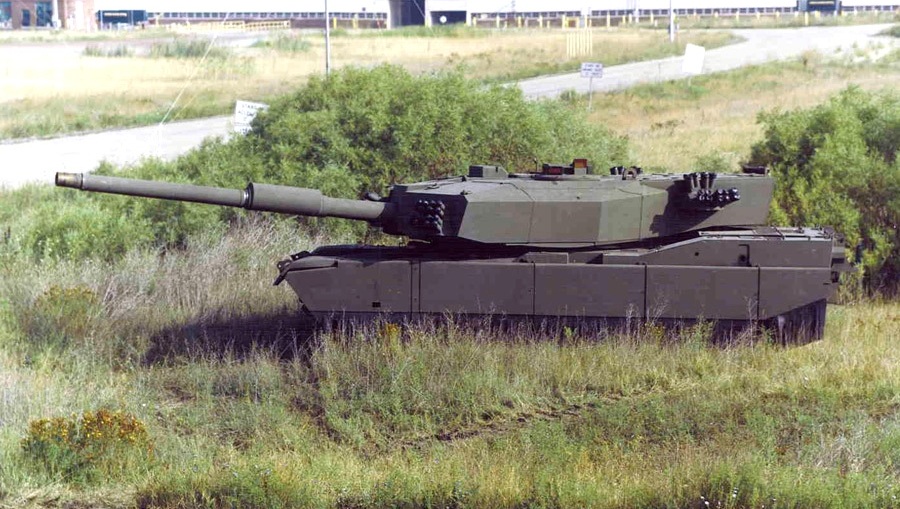
CATTB
There has been this strange tendency to overestimate the Soviet (or, specifically, Russian) capabilities amongst the NATO staff, possibly motivated by the opportunities to spend more money on the military as long as the threat was there, regardless of its severity. This tendency is, oddly enough, alive to this day even with the diminished military might of the Russian Federation.
But, regardless, back then, the idea that it was too late to develop a next generation Abrams in time for it to counter the FST threat took root and the Americans scrapped the entirely new platform project. Instead, they would focus on upgrading the original platform in sufficient numbers (which resulted in the M1A2 Abrams model) and on building an “interim” future Abrams that would be based on some experimental technologies combined with the older Abrams platform.
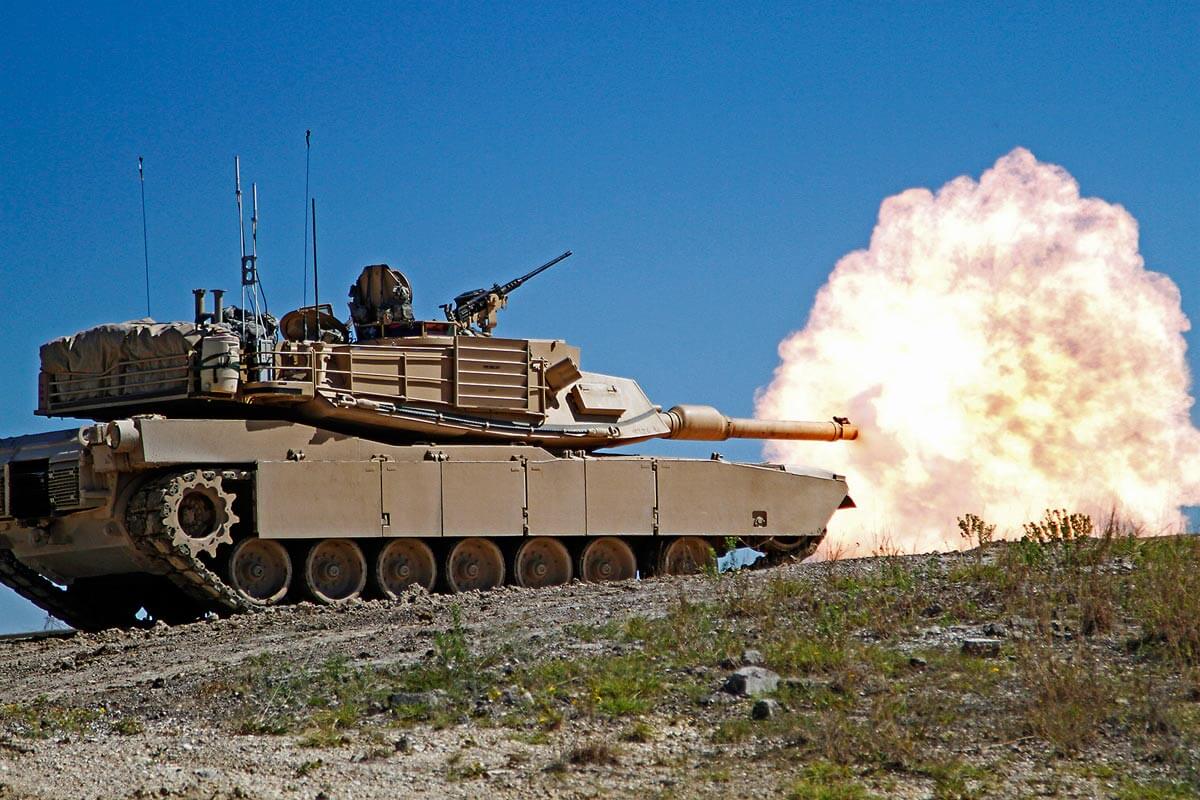
M1A2 Abrams
The most important piece of this experimental technology was, of course, the XM291 dual-caliber cannon, also known under its project name Advanced Tank Cannon (ATAC or sometimes ATACS with the S standing for System). The unique feature of this gun was the fact that it could switch between calibers (120mm and 140mm) in the field by replacing its barrel. The 140mm caliber version of the system was the primary one with its two-piece shells (both KE and CE) having double the muzzle energy of the standard Abrams M256 gun. It was more than enough to take care of any future Soviet tank, a task the gun was specifically developed for. The barrel length of the 140mm version was L/47.
Upon switching to 120mm (the L/55 barrel change would take around two hours), the gun could also fire standard 120mm NATO ammunition. The gun would, in both versions, be automatically loaded by an XM91 mechanism from the 17 round turret bustle, which allowed for a rate of fire of 8 to 12 rounds per minute. Additional 22 140mm or 33 120mm rounds would be stored in the hull. It’s worth noting that thanks to its composite design, both barrels were also inherently extremely accurate by themselves, much more so than those of the M256 gun.
Another very interesting piece of technology was a 120mm version of the same gun fitted with ETC technology. ETC stands for “electro-thermal chemical” and is based on the assumption that solid shell propellants have reached their limits with the conventional technology. Instead, using the ETC technology, the propellant would be ignited by an inserted plasma cartridge, leading to a more efficient discharge. In this case, the XM291 gun, fitted with such tech, was allegedly able to achieve the muzzle energy of 17 MJ. In comparison, a standard 120mm L/44 such as the U.S. M256 has the muzzle energy between 11 MJ and 13 MJ. This puts the energy of the XM291 ETC to the levels normally reserved only for 140mm guns. The advantages of such an improvement are obvious.
Between 1987 and 1988, the XM291 was tested (amongst other places) on another of the series of component demonstrators, this time designated the CATTB (Component Advanced Technology Test Bed).
The CATTB was effectively a modified Abrams with a larger turret housing the abovementioned XM291 gun. The vehicle weighed some 60 tons and had a crew of three men (the loader was removed in favor of the automatic loading mechanism).
The vehicle had advanced composite frontal armor with the turret front itself being equal to 1270mm of RHA equivalent while its sides were allegedly equal to 520mm of RHAe. The hull armor schematic can be seen on the image below (thickness in inches).
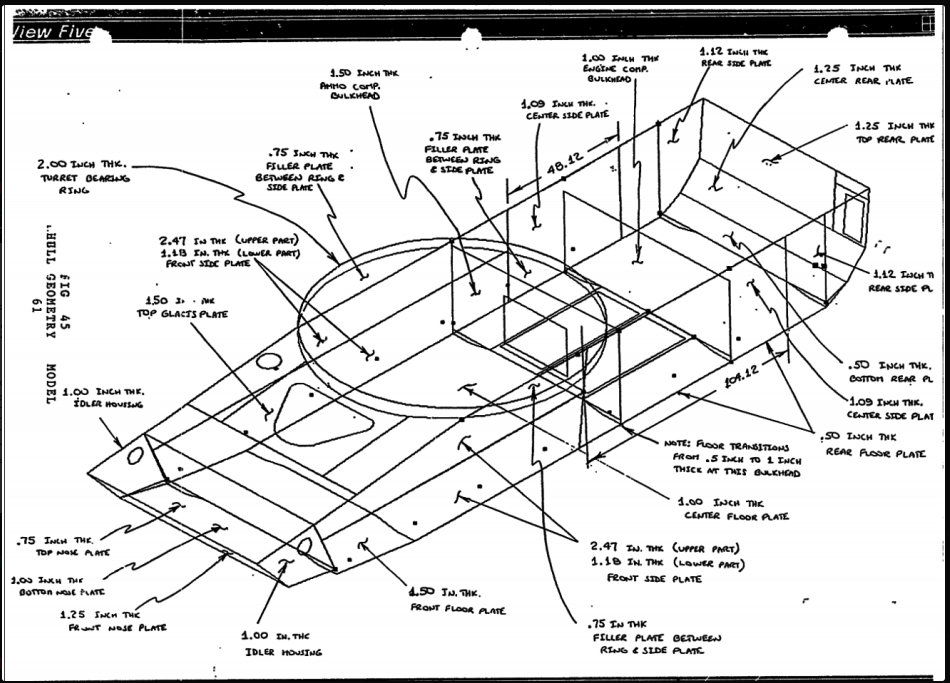
The gun itself was fully stabilized and could, in both configurations, depress to -10 degrees and elevate to +22 degrees. It would fire either standard NATO 120mm rounds or advanced two-piece 140mm kinetic rounds (XM964) or HEAT-MP rounds (XM965). There was also a training round. Like was mentioned above, the rate of fire was, thanks to the automatic loading mechanism, somewhere between 8 to 12 rounds per minute. The gun was aimed using a highly sophisticated, computerized fire control system with a thermal imager and laser rangefinder. The whole thing was allegedly powered by an AIPS power pack consisting of a 1450hp V12 27.56 liter turbocharged Cummins diesel and an automated Allison transmission.
The vehicle was tested by the U.S. Army as a basis for a future production Abrams in 1990 and was viewed rather favorably, even though some partial problems were noted – the tank felt underpowered and lacked advanced protective measures such as an indigenous APS or remote-controlled machinegun stations.
And then the Soviet Union finally collapsed in 1991. With the biggest threat gone, the Americans cut the funding of many military programs, the next generation Abrams included, and started focusing on maintaining and upgrading the existing fleet of tanks, eventually leading to the current generation of heavily upgraded M1A2. The CATTB passed into oblivion, even though rumors of its reappearance would occasionally surface on the internet from time to time, especially in 2015 with the Armata unveiling.
The last chapter of the CATTB history was written in the 1990s with the “Thumper” Abrams. The Thumper was effectively a stripped version of the CATTB built by Lockheed Martin. It lacked several advanced (but expensive) systems and was armed exclusively with the 120mm version of the XM291 gun – it was no longer viable to switch to the 140mm caliber. The tank was lighter than the CATTB, but its armor levels reached only those of the M1A2. The Thumper was tested for a while alongside the XM8 (the first one), but, unfortunately for it, shared its fate and would also get canceled. We are adding this information because the Thumper and the CATTB get often mixed up, although they are different vehicles.
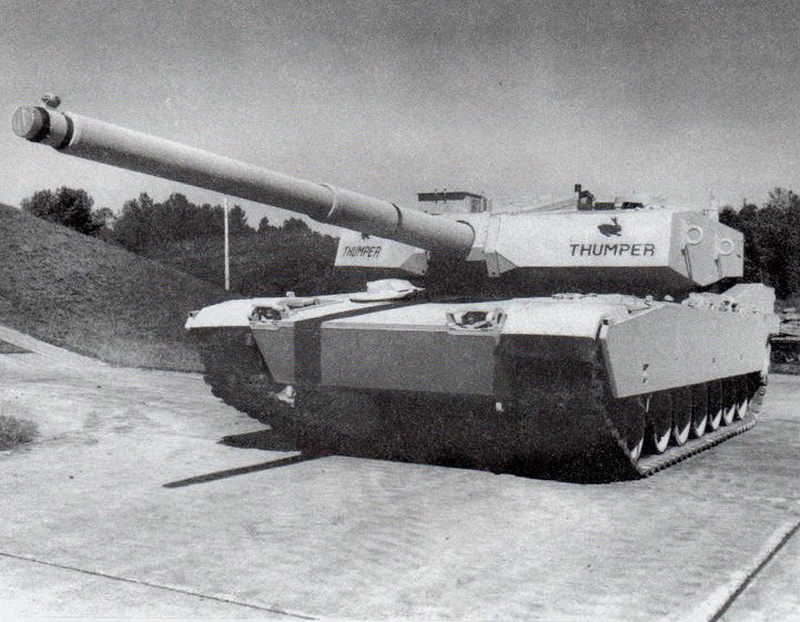
Thumper
However, you’ll have the chance to drive the CATTB in Armored Warfare because this Tier 10 Premium Main Battle Tank will appear soon in Armored Warfare as the ultimate vehicle reward for obtaining levels during the upcoming Last Patriot Battle Path (preceded by XM247 and Griffin 120mm).
In a way, the game will feature two separate branches of Abrams evolution. One, represented by the XM1A3, is a vision of what a future M1A2-based Abrams might look like if the Americans upgrade it with experimental technology. The second one, which will be represented by the CATTB, will show what the Abrams might have been, had the Soviet Union not collapsed and its development had not been cut. Jam-packed with cutting edge tech, our CATTB will be effectively a service Block III Abrams fitted with the technologies of 2020s.
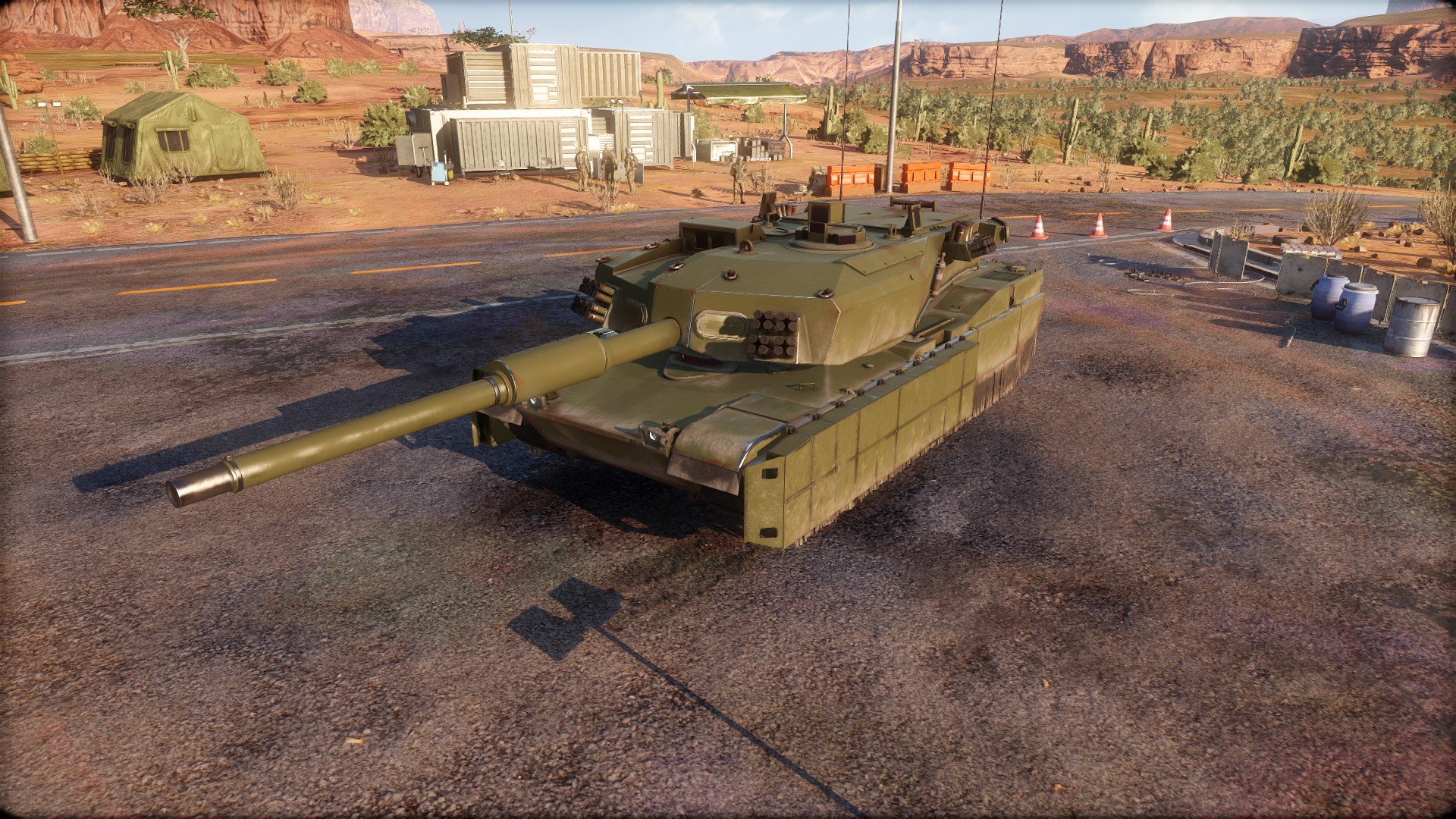
But before we get into any details, the usual disclaimer:
The numbers below are very preliminary as the vehicle has not been properly tested. They are sure to change and should only be discussed as an indicator of how we’d like to set the vehicle up.
With that being said:
When compared to the XM1A3, the CATTB will be a bit heavier (70 tons) and slower. Its armor will be roughly the same as the XM1A3 will have and the vehicle will be protected by both soft-kill APS (AN/VLQ-8A) and hard-kill APS (Trophy) as well as by a retrofitted ERA kit. Additionally, its ammunition rack will have further reduced chance to catch fire and explode due to the experimental nature of the weaponry the tank will carry.
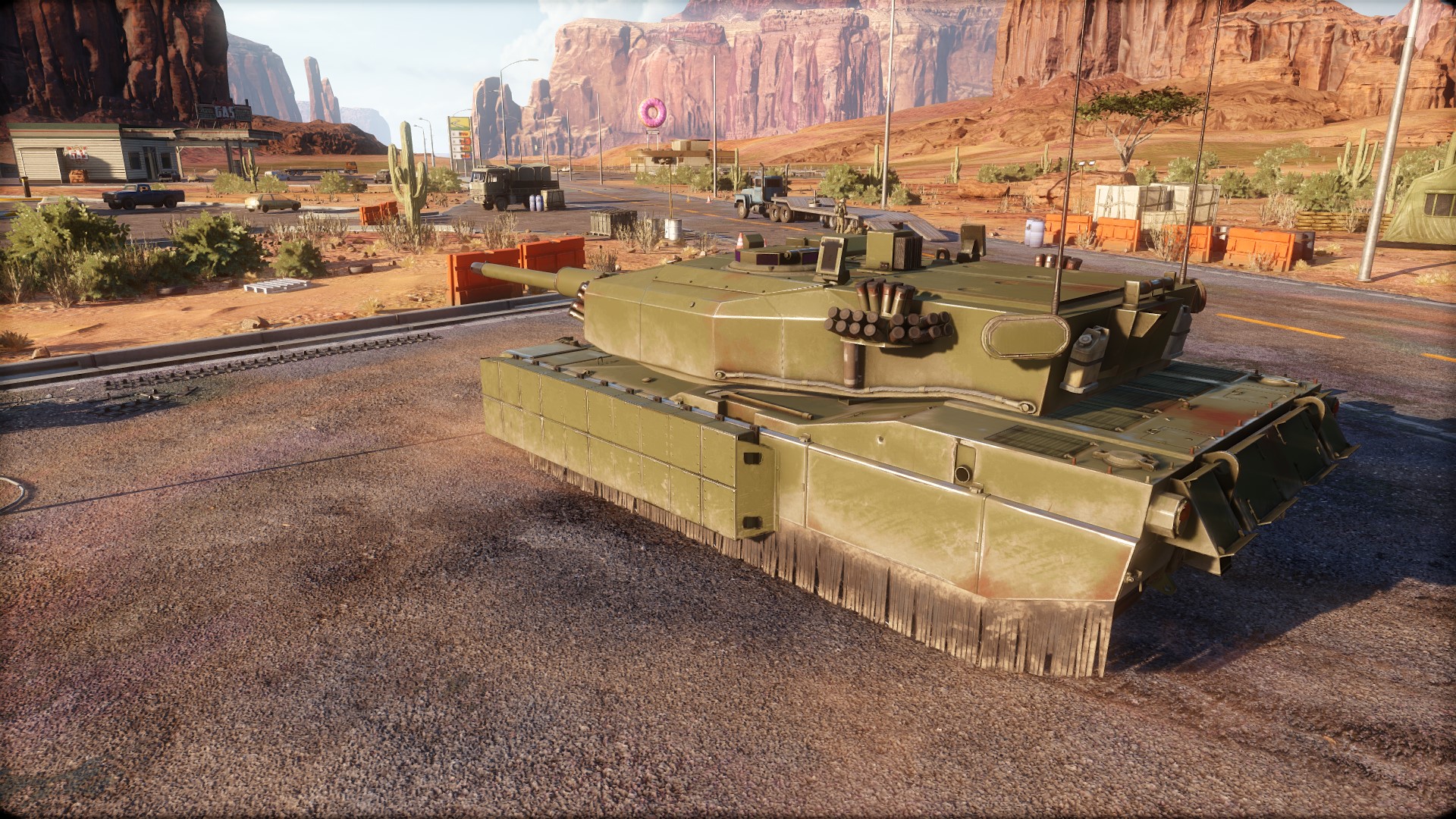
Which brings us to its teeth – and sharp they are indeed! The CATTB will be armed with an experimental 140mm ATACS gun with ETC (electrothermal-chemical) technology and FastDraw automatic loading mechanism.
The ETC technology will allow the vehicle to fire shells at higher initial velocities, leading to high penetration and damage values (APFSDS with 850mm and 880 points of damage per shot, HEAT-MP with 870mm and 900 points of damage per shot). The ETC technology will also allow for a smaller muzzle blast, leading to only one half of the usual camouflage penalty for firing. Additionally, the APFSDS shell itself will be quite special, as it will deal additional 25% damage if it penetrates armor nominally thicker than 340mm (that is, not taking the angle into account).
The FastDraw automatic loader will let you fire two shells in rapid succession before having to be reloaded for a longer period of time (15 seconds).
These advantages will be balanced by the tank’s average to mediocre mobility. The CATTB will be powered by a 1450hp diesel engine, which will be somewhat inferior to the gas turbine of the XM1A3 MBT. Its maximum speed will be 70 km/h but the acceleration and steering rate will both be lower than those of the XM1A3.
And, last but not least, the CATTB will feature a new active ability, pushing – once in a while – the vehicle and its crew to their limits. This ability will allow the CATTB to, once per 60 seconds and for the duration of 10 seconds, increase its acceleration by 300 percent and decrease its reload time by 200 percent. However, when it ends, the vehicle will enter a 10 second downtime, during which the abovementioned characteristics are reduced by 150 percent and 100 percent respectively.

This will put a unique spin on the vehicle’s gameplay.
Much like the other Abrams tanks, the CATTB will be fairly universal, although, for each tactic used, downsides of this tank will have to be carefully considered. Even with its basic characteristics, the tank will be more than capable of tearing its way through most battles or even staying in the second line and using its powerful gun to snipe at longer distances.
However, there’s another, high-risk and high-reward option in play here. Its kinetic shells, combined with the abovementioned new active ability, will allow for some very aggressive tactics. Skilled players will be able to target heavy vehicle armor with the deadly shells, deal a lot of damage and trigger the active ability to finish the target off. However, the obvious downside to such stratagems is the active ability downtime, during which the tank will be left mostly exposed.
Regardless, this MBT has the potential to excel on practically any battlefield, should your choice of tactic be the right one. What choice will it be, now that’s something we’ll leave up to you.
We hope that you will enjoy this vehicle and will see you on the battlefield!




